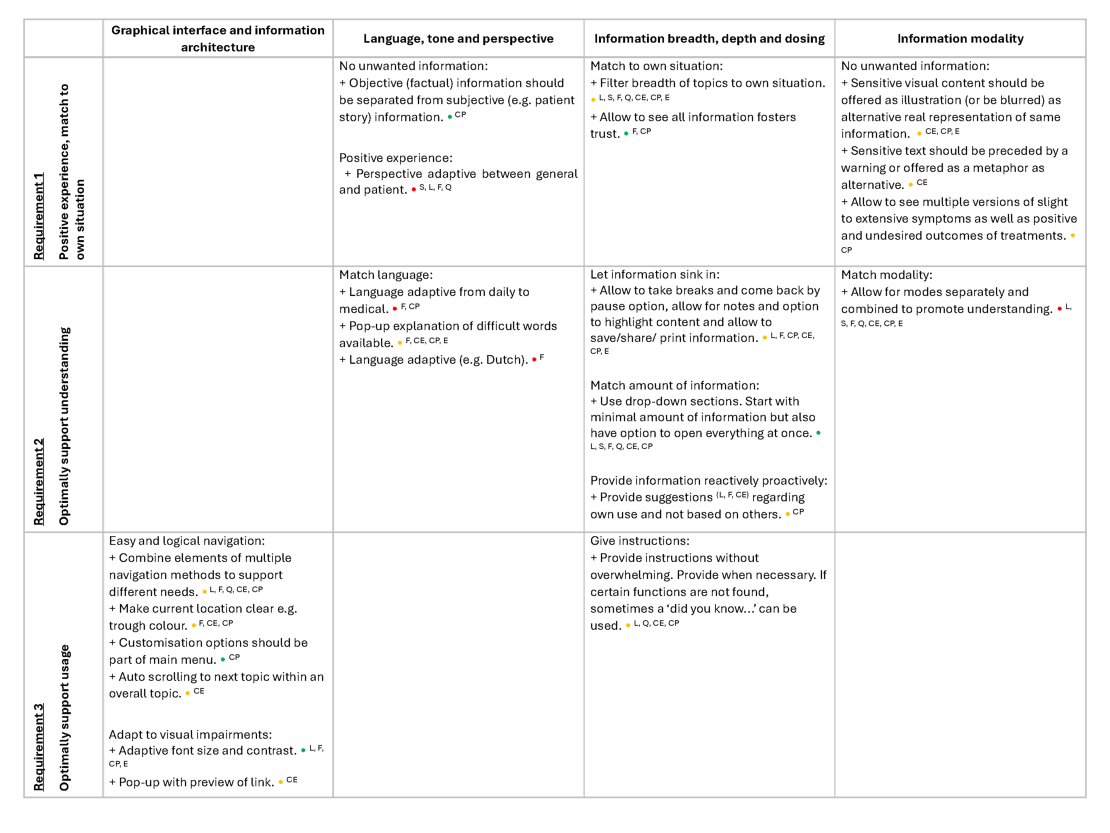Better informed, better care: Optimising breast cancer information presentation based on individual preferences
The PERSONa project
When a patient is diagnosed, a challenging and emotional journey is started. Being informed is key for navigating this period. Cancer patients experience difficulties with getting adequate information about their illness, in a manner that fits their personal preferences and needs. The lack of personalised patient education for breast cancer patients results in, amongst others, serious mood problems, a distorted risk perception, decisional regret and a lower quality of life.
To empower breast cancer patients to participate in shared decision making, information should be made more understandable. Efforts have previously been made to personalise information content. However, tailoring of information presentation (including amount, timing, complexity, perspective, style and navigation) is relatively unexplored.
We designed a framework for personalised presentations of digital information for and with breast cancer patients. The project used a human-centred approach that includes not only patients by focus groups, questionnaires, co-design sessions and evaluation, but also included digital information providers.
The resulting framework
The framework was developed utilising the design cycle of Wieringa and the design thinking methodology with a human-centred design philosophy. The needs of the different stakeholders were identified and combined in requirements. Methods to visualise, extend and evaluate the existing knowledge and fulfil these requirements were explored.
Throughout the different research stages multiple general suggestions were provided, such as fostering trust, using explicit headings or having a clear and intuitive home button. Although they have value for information provision, these will not be repeated in the tailoring framework as these are not specific for tailoring.
The sources of the tailoring elements are the previous steps taken during the PERSONA project. These sources include the literature review (L), stakeholder analysis (S), evaluation of the patient journey in focus groups (F), their alignment in a broader population trough a questionnaire (Q), co-design sessions with experts (CE) and patients (CP) and behavioural intention evaluation (E) using the clickable prototype. Most framework elements are based on multiple of these steps.
The framework is compiled in a tabular format. The rows show ‘why’ a certain element of the framework could be implemented. The why’s relate to the user stakeholder requirements. The columns of the table show the ‘what’ and are represented by the different design elements that can be used for customisation. The cells show ‘how’ customisation options can be utilised within a design element to meet specific requirements. The feasibility as deemed by the platform owner stakeholder requirement is rated per ‘how’ in the table using dots showing high (green), medium (orange), and low (red) feasibility. High feasibility is considered relatively easy to implement and maintain. Medium feasibility is expected to take initially more work to implement but is easy to maintain. Low feasibility is expected to remain high maintenance over time. The building of the clickable prototype was used as reference when making the estimations.

